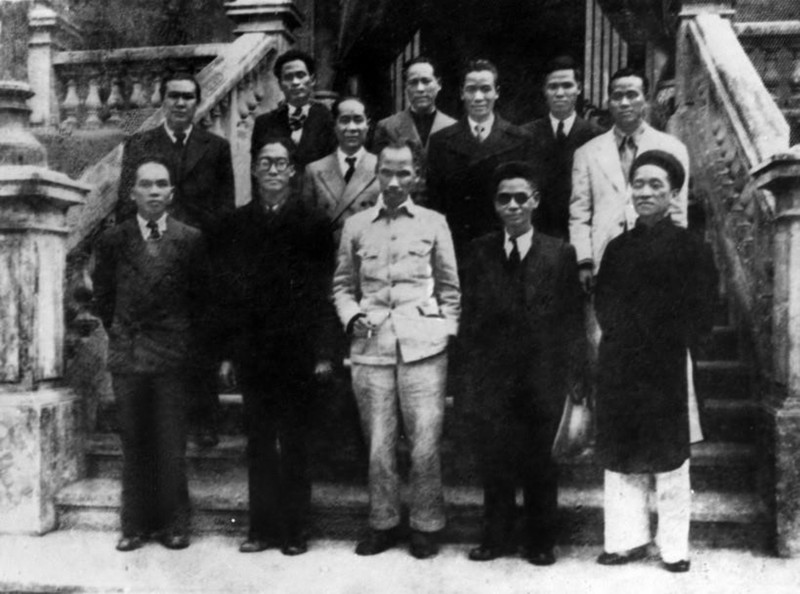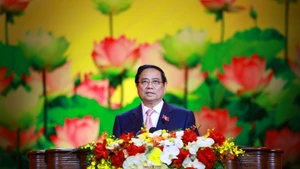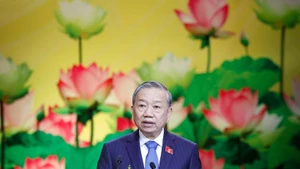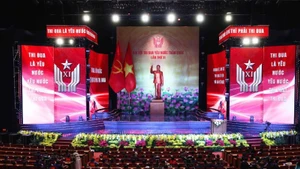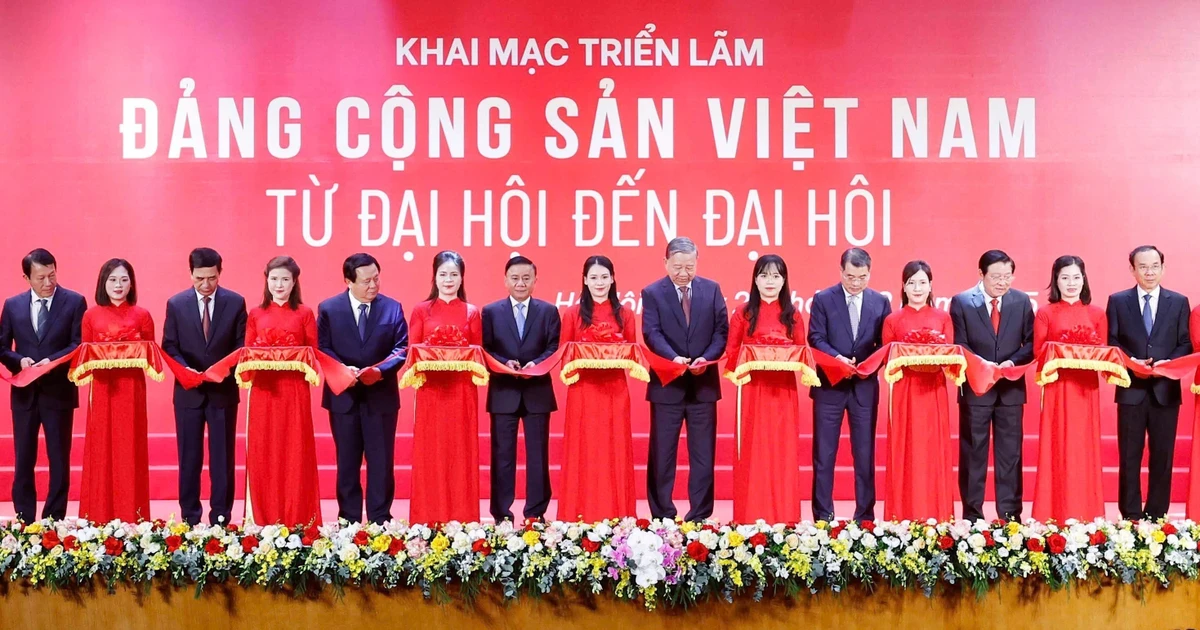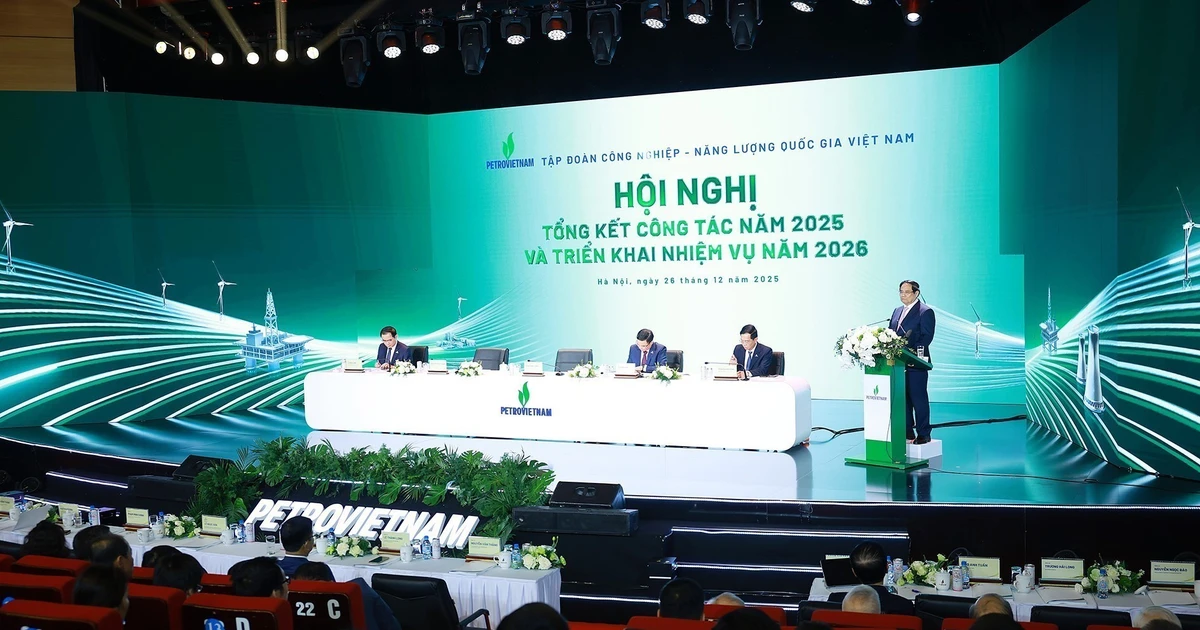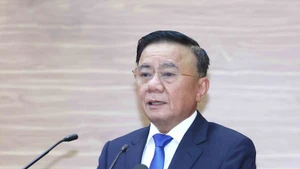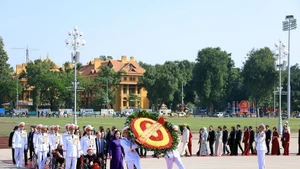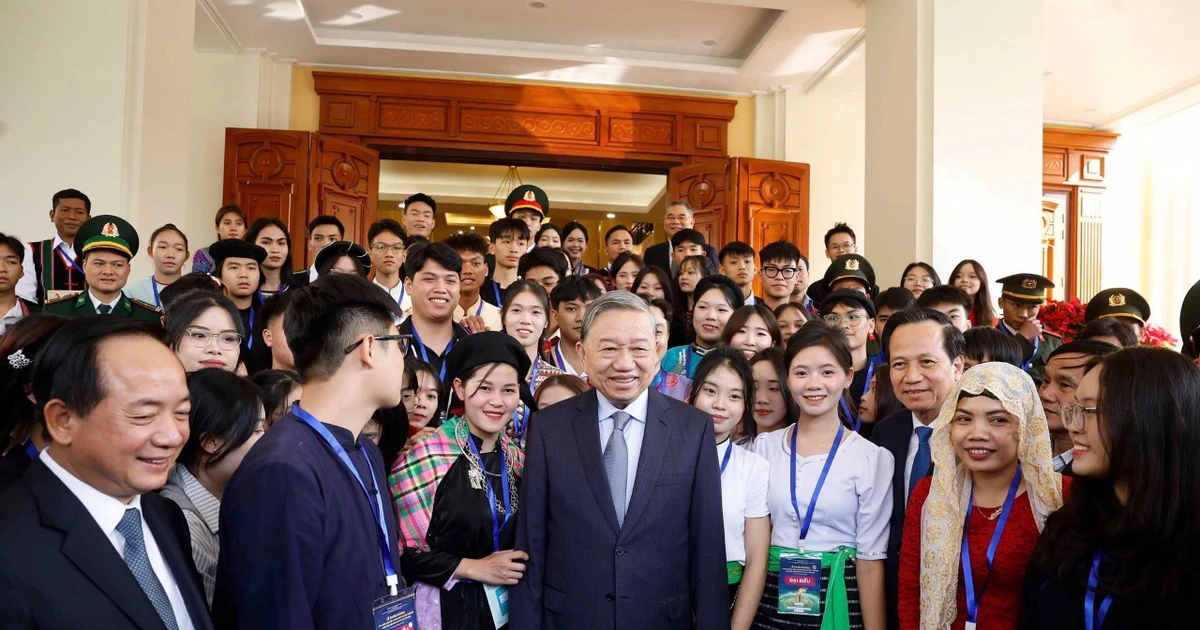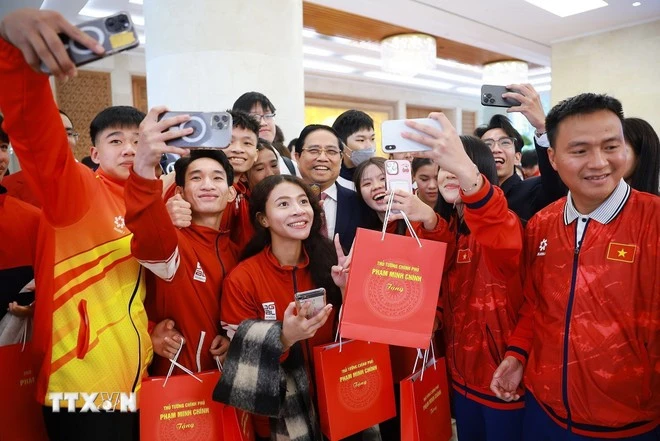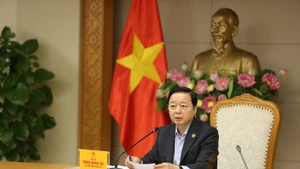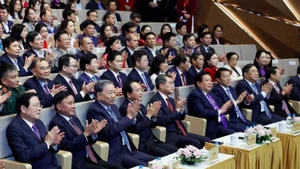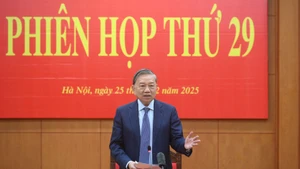President Ho Chi Minh convened a meeting of the Liberation Committee. At this meeting, he proposed the implementation of a broad-based policy of unity, establishing a national united government comprising representatives of patriotic parties as well as non-partisan and reputable figures.
His proposal was unanimously approved.
Many Viet Minh members voluntarily stepped aside to make room for representatives from other political parties.
Ho Chi Minh was elected President of the Provisional Government of the Democratic Republic of Viet Nam.
On the same day, President Ho Chi Minh received the ministers of the Provisional Government.
The General Uprising continued in the localities. In Rach Gia, under the leadership of Party grassroots organisations, revolutionary masses equipped mainly with bamboo spears, lances, and banners marched from Chau Thanh, Giong Rieng, Go Giao, and surrounding areas towards the provincial capital. They quickly coordinated with local forces to launch a general insurrection and seize power in the province. The demonstrators chanted slogans: ‘Down with Japanese fascists and their collaborators’ and ‘Down with the puppet government of Tran Trong Kim’.
By 9 am that morning, the armed core of the insurgents had surrounded the Governor’s Palace, forcing the governor to surrender.
The Uprising Committee announced the establishment of the Provisional Revolutionary People's Committee of Rach Gia Province to replace the Japanese fascist puppet government.
The demonstrators then seized the police headquarters, the barracks of colonial troops, the treasury, and the post office. They also stormed the prisons to liberate political prisoners, and hunted down pro-French and pro-Japanese collaborators guilty of crimes against the people.
By 12 noon, 60,000 people from all directions gathered at the provincial stadium for a solemn rally. The Insurrection Committee formally proclaimed the establishment of the Provisional Revolutionary People’s Committee of Rach Gia Province, replacing the puppet administration of Japanese fascists.
In Chau Doc, at midnight and dawn, armed groups of Chau Doc Town occupied the offices of the puppet administration, including the provincial office of French rule, the intelligence bureau, and the police station. Security troops surrendered their weapons and ammunition to the revolution.
By morning, tens of thousands of people from the town and neighbouring areas held a march, followed by a mass rally to welcome the Revolutionary People’s Committee of Chau Doc Province, chaired by Nguyen Van Thoi. Within just one week, revolutionary administrations were established at district and commune levels, including representatives of all classes, ethnic groups, and religions.
In Bien Hoa, nearly 10,000 people from the provincial capital and surrounding areas attended a rally celebrating the victory of the local uprising and welcoming the Provisional Revolutionary People’s Committee of Bien Hoa Province, chaired by Hoang Minh Chau.
In Bien Hoa, nearly 10,000 people from the provincial capital and surrounding areas attended a rally celebrating the victory of the local uprising and welcoming the Provisional Revolutionary People’s Committee of Bien Hoa Province.
The rally concluded with an oath-taking ceremony in which participants, on behalf of 150,000 people of the province, pledged to sacrifice their lives and property to defend the Fatherland and safeguard the newly-won revolutionary power. The rally then turned into a massive demonstration marching through the streets of Bien Hoa.
